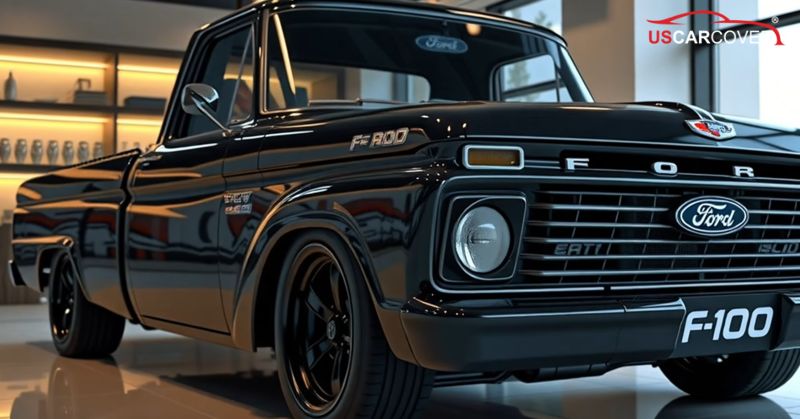
The legendary Ford F-100 is making a comeback in 2026, reimagined in two forms: an all-electric pickup and a traditional gasoline model. This revival of the F-100 nameplate offers a retro-inspired truck with modern capabilities. Meanwhile, the Ford F-150 XL remains the trusty workhorse at the base of Ford’s full-size truck lineup. Many tradesmen and small business owners are now wondering how the new F-100 compares to the proven F-150 XL. In this article, we’ll break down the design, performance, capabilities, and value of the 2026 F-100 (both EV and gas) versus the F-150 XL to see which is the better fit for your needs.
Related Articles: 2026 Ford F-150 Review: 7 Trims and Packages to Consider (including the return of King Ranch and Platinum 2WD)
Design & Styling
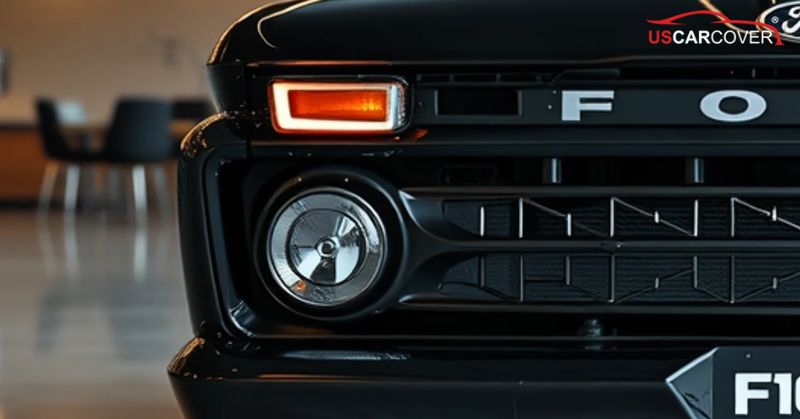
Ford F-100 (2026) – The new F-100 boasts a vintage-inspired design that pays homage to classic Ford pickups. It features a boxy shape, prominent wide grille, and round headlights reminiscent of its mid-20th-century roots. This retro styling isn’t just for looks; it makes the F-100 stand out on the road and at the jobsite. Despite the throwback exterior, the F-100 is fully modern underneath. Its slightly smaller dimensions (compared to an F-150) could make it easier to maneuver in tight work areas or urban streets, all while still providing a practical pickup bed. Inside, the F-100’s cabin blends old-school charm with new technology. Expect a straightforward, driver-focused layout with durable materials, but also modern touches like a digital instrument cluster and an intuitive infotainment screen (especially in the EV version).
Ford F-150 XL – The F-150 XL carries the familiar contemporary Ford truck design that tradesmen know and trust. It has a no-nonsense, rugged appearance with a squared-off body, defined shoulder lines, and a tough stance. Function takes priority: the XL trim typically comes with basics like steel wheels and black plastic trim for easy repair and maintenance. It’s a bigger truck than the F-100, with a longer bed option and a higher ride height, which can be advantageous for hauling larger loads. The F-150’s interior on the XL trim is utilitarian but comfortable. Ford updated even the base XL in recent years to include a large touchscreen (around 12 inches) and improved connectivity, but it still uses hardy vinyl or cloth seats and rubberized flooring – ideal for muddy boots and quick clean-ups. Overall, the F-150 XL’s styling is modern and functional, built to get the job done day in and day out.
Related Articles: 2026 Toyota RAV4 Review: Is it still worth buying in the all-electric era?
Powertrain Options: Electric vs Gas
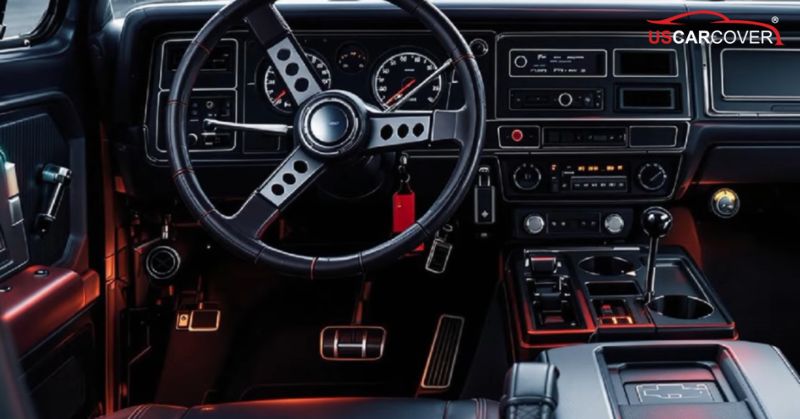
One of the biggest differences between the new F-100 and the F-150 XL is under the hood (or under the floorpan, in the case of the EV). The Ford F-100 EV and F-100 Gasoline versions offer two distinct approaches to power, while the F-150 XL sticks with traditional gasoline engines:
F-100 EV (Electric) – The electric F-100 is powered by a dual-motor setup driving all four wheels, delivering instant torque and impressive horsepower. Ford hasn’t released official specs as of 2025, but industry chatter suggests around 480 hp and substantial torque for the F-100 EV – similar to the powertrain in the Mustang Mach-E GT. In real terms, that means the electric F-100 should accelerate with sports-car quickness, a novelty in the pickup world. It will likely come with a sizable battery pack to provide a competitive driving range (expect well over 250 miles per charge, possibly around 300-350 miles if aimed at serious use). Charging on the go will be supported by fast DC charging, making it feasible to recharge the battery to a decent level during a lunch break on long trips. For tradespeople, the silent operation and zero tailpipe emissions of the F-100 EV could be a boon on early morning job sites or indoor work areas – you can run the truck or power tools from it (via onboard power outlets) without fumes. However, the electric model will weigh more due to the batteries, and extreme cold or heavy towing can reduce its range.
F-100 Gas (ICE) – For those preferring tried-and-true gasoline power, the F-100 is also expected to offer an internal combustion engine option. Ford is likely to equip it with one of their robust V8 engines to emphasize the truck’s classic character. A 5.0L V8 producing around 400 hp is a strong possibility, giving the F-100 plenty of muscle and that unmistakable V8 rumble beloved by traditional truck enthusiasts. This engine would be paired with a 10-speed automatic transmission, driving either the rear wheels or all four (4x4 will likely be available). The gas F-100 might also offer a smaller turbocharged V6 (such as Ford’s 2.7L EcoBoost) as a base engine for efficiency and cost savings, but the hallmark powertrain for this model will likely be a hearty V8. In terms of daily usage, the gasoline F-100 provides the familiarity of quick refuels – you can top off the tank in minutes at any gas station, a convenience that appeals to many contractors and businesses who are always on the move. Maintenance and mechanical complexity will be in line with other modern gas trucks (oil changes, fuel system, etc.), but there’s no need to worry about battery range or charging downtime with this version.
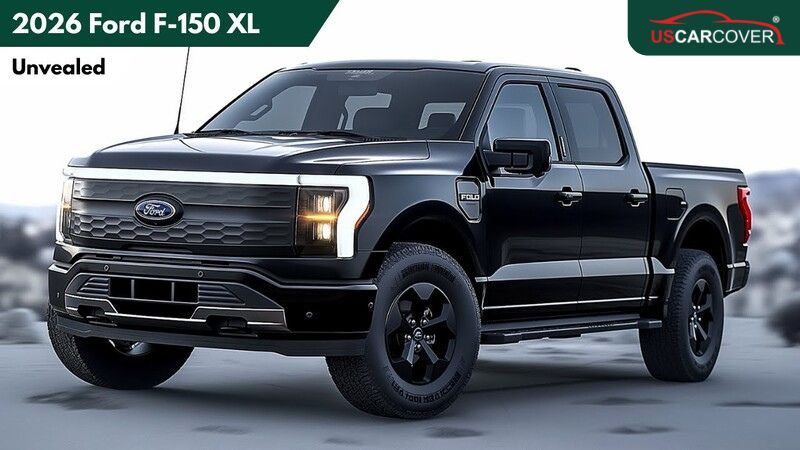
Ford F-150 XL (Gas) – The F-150 XL has a well-earned reputation for dependable powertrains. In 2026, the F-150 XL likely comes standard with Ford’s 2.7L EcoBoost V6, which offers about 325 hp and 400 lb-ft of torque – plenty for everyday hauling and towing tasks. This turbo V6 balances power and efficiency, giving the base F-150 surprising punch off the line and strong mid-range torque for towing. For those needing more muscle, the XL trim can often be optioned with a 5.0L V8 (400 hp), similar to the one in the F-100, or even a high-torque turbo diesel or hybrid V6 (depending on Ford’s lineup updates). Power is sent through a 10-speed automatic transmission, and buyers can choose between rear-wheel drive or four-wheel drive. The key with the F-150 XL is flexibility – you get a range of engine choices to suit budget and needs. It’s worth noting that while the F-150 XL’s engines may have slightly less headline-grabbing power than the F-100 EV, they are proven units known to run reliably for hundreds of thousands of miles with proper care, a crucial factor for work truck buyers.
Related Articles: 2026 Chevrolet Suburban Review Can V8 & Diesel Still Beat Hybrid?
Performance, Towing & Payload
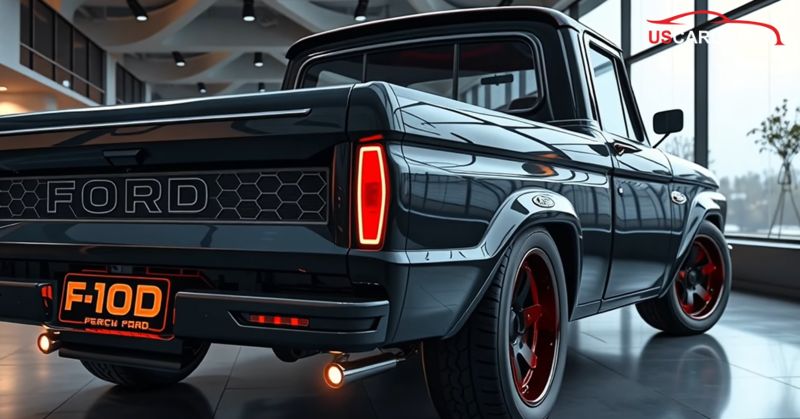
When it comes to doing real truck work – towing trailers, hauling equipment, and tackling tough terrain – both the F-100 and F-150 have strengths, but there are notable differences:
Towing Capacity – The Ford F-150 XL in a typical configuration can tow in the range of 7,000 to 8,500 pounds with the standard V6, and even more (up to around 11,000+ pounds) if equipped with the V8 and the max towing package. This is more than enough to pull a construction trailer, a couple of ATVs, or a small camper. The F-100, being a slightly smaller and lighter-duty truck, is expected to have a lower towing capacity than a similarly equipped F-150. The F-100 Gas V8 might tow roughly 6,000 to 8,000 pounds, which covers most needs for small business owners (like landscaping gear or a trailer with building materials). The F-100 EV could be a wild card – electric trucks have tremendous torque which is great for towing, and it might tow a similar 7,000+ pounds. However, heavy towing will drain an EV’s battery quickly, so while the F-100 EV could handle towing your work trailer in terms of sheer pulling power, you’d have to plan around more frequent charging stops if you’re towing long distances. In summary, for pure towing capacity and endurance, the F-150 XL (especially with a gas engine) has an edge for those regularly pulling heavy loads.
Payload & Bed Capacity – The payload rating (how much weight you can throw in the bed) also favors the bigger F-150. A Ford F-150 XL can often carry around 1,800 – 2,000 pounds or more in its bed (depending on config), which is useful for pallets of supplies or a loaded toolbox. The F-100 being slightly smaller might have a payload closer to 1,500 – 1,800 pounds. The F-100 EV, again, will have a heavy battery, so its payload could be a bit lower due to the truck’s higher curb weight (EV pickups often sacrifice some payload to carry batteries). That said, an EV also has the advantage of potentially using its battery to power tools at a jobsite via built-in power outlets (as seen in the F-150 Lightning), which the F-100 EV may offer – effectively serving as a mobile generator for your power tools or even jobsite lighting. The bed sizes differ too: the F-150 XL comes in multiple bed lengths (from about 5.5 feet to 8 feet on some cab models), whereas the F-100 might offer a single midsize bed length (perhaps around 5.5 or 6 feet) given its overall smaller profile. Both trucks have sturdy beds with plenty of tie-down points. If you need to routinely load up drywall, lumber, or gravel, the F-150 with a long bed will simply let you carry more in one go. But the F-100’s bed will still handle most day-to-day tasks for tradespeople, just in slightly smaller volume.
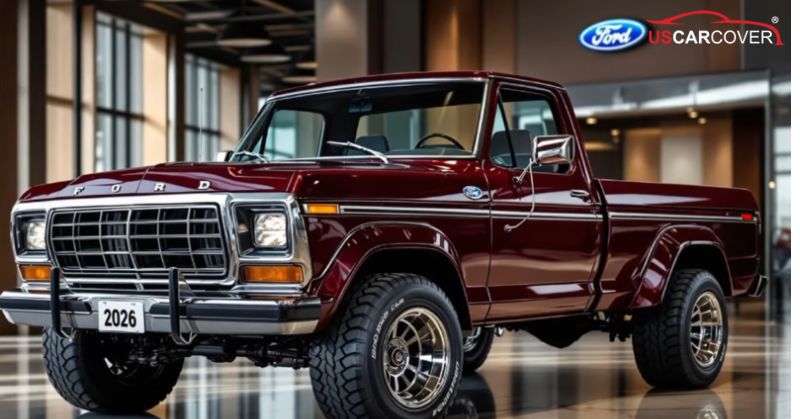
Off-Road and Maneuverability – Tradesmen often find themselves on unpaved job sites or rough roads. The F-150 XL, especially with 4x4, is very capable off-road – its higher ground clearance and available off-road packages (FX4) let it tackle mud, ruts, and fields with confidence. The F-100, particularly the 4x4 gas version, will also be off-road capable, and its shorter wheelbase could be an advantage on tight trails or construction sites with limited space. The EV model’s weight (due to batteries) could make it feel very planted but possibly heavy in mud. Still, the instant torque of electric can be useful for crawling over obstacles. Maneuverability is where the F-100 might shine; its smaller size and likely tighter turning radius will make it easier to park in crowded urban job sites or to weave through equipment in a yard. The F-150, being larger, might require a bit more caution in close quarters. If you’ve ever tried to squeeze an F-150 into a city parking garage or a narrow work zone, you know it can be a challenge – the F-100 could alleviate that with its more compact footprint.
Related Articles: 2026 Toyota Hilux Review The Truth After I Drove It
Interior Comfort & Features
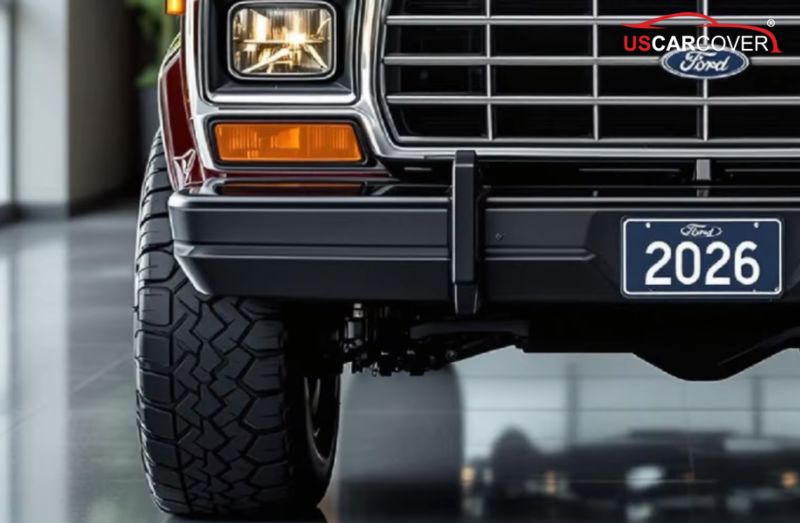
Ford F-100 – Inside the F-100, Ford is expected to blend retro simplicity with modern convenience. Don’t expect the bare-bones interior of a 1970s truck; the 2026 F-100 should come with comfortable seating for five (in a crew cab configuration) and all the essential tech. The F-100 EV will likely have a high-tech cockpit, possibly borrowing elements from Ford’s EV lineup – think a large central touchscreen (similar to the Mustang Mach-E’s vertical display) and a digital gauge cluster. It may also offer advanced driver-assist features and connectivity (like Ford’s Co-Pilot360 safety suite, adaptive cruise control, 360-degree cameras, etc.), since EVs tend to be the range-toppers. The F-100 Gas version might stick to a more analog feel: classic round dials for gauges and a simpler infotainment system, appealing to those who like a more traditional truck vibe. However, it won’t be spartan – air conditioning, power accessories, and an infotainment screen with smartphone integration (Apple CarPlay/Android Auto) will all be there, as those are expectations even for work trucks now. One unique aspect of the F-100 could be its seating and trim options: we might see special two-tone upholstery or dash designs that nod to the 1970s heritage, giving owners a bit of nostalgia every time they climb in. Space-wise, the F-100’s cab might be slightly less roomy than the F-150’s, but a crew cab F-100 will still offer ample space for a crew of adults. Overall, the F-100’s interior will likely surprise people with how modern and comfortable it is, given its retro exterior.
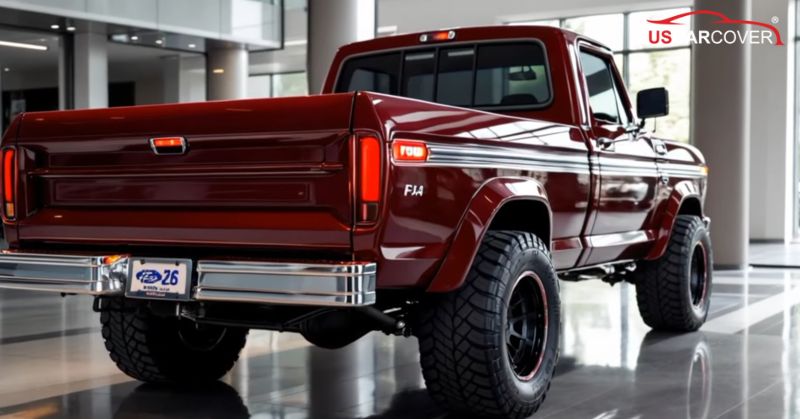
Ford F-150 XL – The F-150 XL’s interior is all about durability and functionality. It’s the truck you won’t mind getting dirty after a long day’s work. The base XL comes with easy-to-clean vinyl seats (or durable cloth) and a rubber floor, which is perfect for muddy boots or tossing in tools behind the seat. While it’s the entry trim, Ford has not skimped on essential tech: you get a big touchscreen infotainment system running the latest SYNC interface, so hooking up your phone or using the navigation is straightforward. The instrument cluster might be a mix of analog gauges with a small digital center display for trip info. One advantage of the F-150’s long production history is that the ergonomics are well-sorted – plenty of storage cubbies for your gear, big knobs and buttons that can be operated with gloves on, and comfortable seats built for long hours. Higher trims of the F-150 offer luxury, but the XL is focused on the basics done right. You can still option features like cruise control, power mirrors, and Ford’s suite of safety aids (forward collision warning, lane-keeping assist, etc.) even on the XL, to enhance daily usability. In terms of space, the F-150 crew cab’s rear seat is very generous – if you carry coworkers or family, they’ll have no complaints about legroom. The F-100 might give up a little space here, but unless you regularly fill every seat with big adults, both trucks will serve well for transporting your team or kids in reasonable comfort. In summary, if you want a few more frills and a unique style, the F-100’s interior will impress, but if you prioritize tough materials and proven layout, the F-150 XL’s cabin is hard to beat for work duty.
Related Articles: 2025 Cadillac Escalade V-Series Review: Power, Luxury, and Performance Through a Veteran’s Eyes
Fuel Economy vs Running Costs
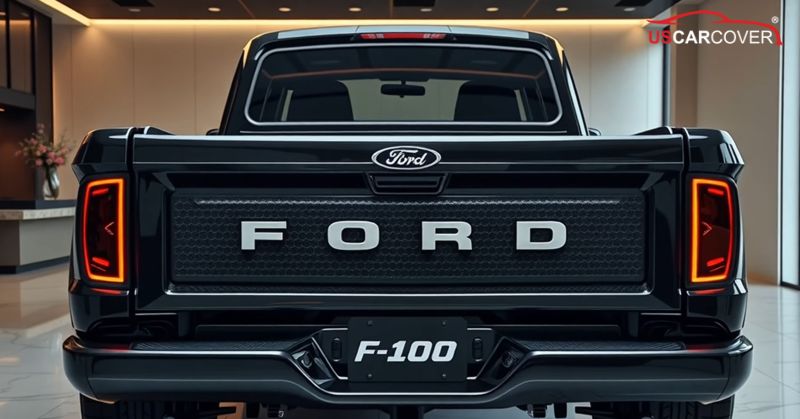
This is where the choice between electric and gasoline really becomes apparent, and it can affect your day-to-day costs as a business owner or daily commuter
F-100 EV – With the electric F-100, you won’t be visiting gas stations at all. Instead, you’ll charge up either at home, at work, or at public charging stations. If you can charge overnight at home (or your depot), the cost per “fill-up” is typically much lower than gasoline – electricity rates might make it only a few dollars for a full charge, which could be significantly cheaper than a tank of gas for the same mileage. Plus, maintenance costs on an EV are generally lower: no oil changes, fewer moving parts to wear out (no transmission, simpler driveline), and brake wear is reduced thanks to regenerative braking. For a small business, this can mean less downtime and lower service bills. However, an EV does bring range anxiety considerations. If you often drive long distances or don’t have consistent charging access, the F-100 EV requires planning – you’ll need to schedule charging stops on long trips, and heavy loads or towing will mean more frequent charges. There’s also the initial cost: electric trucks like this tend to have a higher upfront price. The F-100 EV is expected to be more expensive to buy than either the F-100 gas or the F-150 XL. You might recoup some of that through lower fuel and maintenance costs over time (and possibly tax incentives for electric commercial vehicles), but the entry barrier is something to note.

F-100 Gas & F-150 XL (Gas) – Gasoline trucks have the benefit of quick refueling and widespread fuel availability, which is a big plus for many workers. The F-150 XL with the 2.7L V6 is actually fairly efficient for a truck its size – on highways without a load, it can manage in the low-20s MPG, and around mid-to-high teens MPG in mixed driving. Add a heavy load or trailer and those numbers drop, but you can always find a gas station to refill in a few minutes. The F-100 with a V8 will likely be a bit thirstier – expect mid-teens MPG on average, as a trade-off for that powerful engine. If Ford offers a smaller engine in the F-100 (say a turbo six or four), that version could achieve fuel economy closer to the F-150’s V6 or better, due to slightly lower weight. Maintenance-wise, both the F-100 gas and F-150 will need regular oil changes, filter replacements, and occasional tune-ups, as is normal. These are costs that you can budget for and most mechanics can handle easily. One advantage for the F-150: parts and service are everywhere, given how many F-150s are on the road – any town with a garage can likely service it. The F-100, being a new model, will share many components with other Fords but could have some unique parts (especially the EV version) that may require dealer service initially. In terms of long-term durability, gas engines have known lifespans and can be overhauled or repaired relatively straightforwardly. Electric drivetrains should be durable too, but battery degradation over many years is an unknown factor (Ford’s batteries are warrantied for 8 years or 100k+ miles, so there is coverage in early years).
In short, if you want the lowest day-to-day fueling cost and don’t mind planning for charging, the F-100 EV might save you money over the life of the vehicle. If you prefer the lower purchase price and unlimited range (as long as there’s gas in the tank) of a traditional truck, the F-150 XL or F-100 gas will feel more convenient.
Related Articles: 2026 Dacia Sandman Review: Is a low price really worth buying
Pricing & Value
While final pricing for the 2026 Ford F-100 models hasn’t been officially announced yet, we can discuss the expected ballpark and how it compares to the Ford F-150 XL:
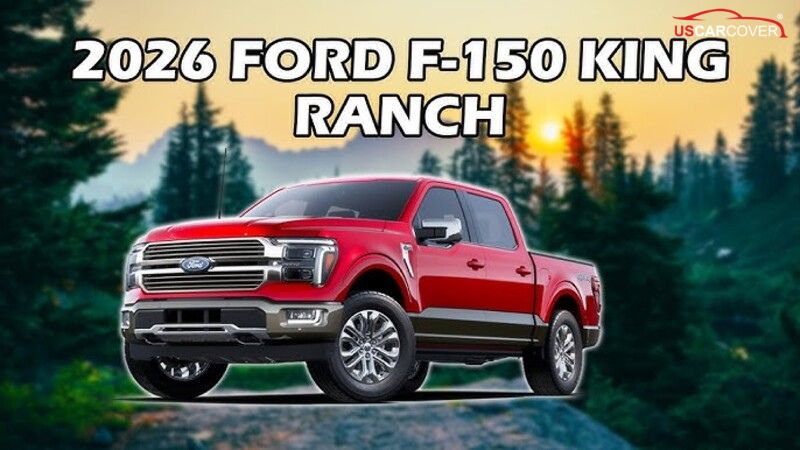
Ford F-150 XL – The F-150 XL is popular in fleet and work circles largely because of its value. For the 2025 model year, the XL started around the $40,000 mark (give or take a few thousand, depending on cab and bed configuration). We anticipate the 2026 F-150 XL to be in a similar range, perhaps creeping up slightly due to new features (mid-$40k for a basic crew cab 4x2, for example). For that price, you’re getting a full-size truck with serious capability and a proven track record. It’s hard to beat the F-150 XL in bang-for-buck if all you need is a rugged truck to get work done. Plus, Ford often runs incentives or offers for businesses on the F-150 XL, and its high resale value helps long-term costs.
Ford F-100 Gas – The gasoline F-100, if positioned as a special model with retro appeal, might actually come in a bit higher than a comparable F-150 XL. Think of it as a niche offering – it’s new, it’s stylish, and it might be produced in slightly lower volume. If the F-100 gas is equipped with a V8 and unique styling elements, we wouldn’t be surprised to see a starting price in the mid-$50,000s or more. That could go even higher with options or higher trims. Essentially, you might pay a premium for the F-100’s cool factor and novelty. If Ford instead positions the F-100 as an entry-level simpler truck (less likely given the dual EV/ICE strategy), the price could align more with the F-150. But current sentiment is that the F-100 will be somewhat of a “halo” truck – appealing to enthusiasts as well as workers – so expect to spend a bit more for it.
Ford F-100 EV – Electric vehicles, especially trucks, tend to cost more upfront due to the expensive battery and tech. The F-100 EV is no exception. It’s rumored that a fully loaded F-100 EV could approach premium pricing (perhaps in the $80-90k range) if it comes with all the bells and whistles and high-performance specs. This would put it in the same territory as the high-end F-150 Lightning or even the F-150 Raptor in terms of cost. There may be a base trim of the F-100 EV that’s cheaper, but even then, anticipate something around $60,000+ at minimum. Ford might justify this with the F-100 EV’s dual nature as both a capable truck and a tech showcase (advanced connectivity, maybe even hands-free driving tech, etc.). For small business owners, that high upfront cost could be a hurdle – though factors like lower maintenance, fuel savings, and possible tax credits might soften the blow. It’s worth crunching the numbers: if an F-100 EV saves you X dollars a month on gas and maintenance, over a few years it might narrow the price gap compared to a gasoline F-150. Still, the initial investment is significant.
In terms of overall value, the decision might come down to what you value more: The F-150 XL is the value champion for getting work done on a budget. The F-100 gas offers a blend of function and form (you pay extra for style and nostalgia, but you still get a solid truck). The F-100 EV gives you cutting-edge performance and green cred, but at a steep price. If your work or business can make use of the EV’s advantages (and possibly write off some costs), it could be worth it. Otherwise, many practical buyers will find the F-150 XL’s straightforward affordability hard to pass up.
Conclusion: Which Truck is Right for You?
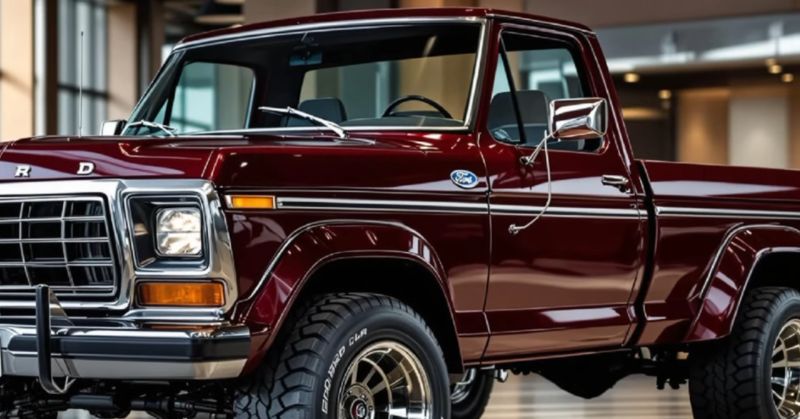
Choosing between the 2026 Ford F-100 and the Ford F-150 XL ultimately depends on your priorities and how you’ll use the truck. The F-100 in both its forms is an exciting addition – the electric version offers thrilling performance and zero-emissions peace of mind, while the gasoline version brings back a classic truck feel with modern reliability. If you’re a small business owner or tradesperson who values style and innovation, and you don’t mind paying a premium, the F-100 is a compelling option. It’s the kind of pickup that turns heads on the jobsite and sparks conversations with its retro looks, all while packing plenty of capability for light-to-medium-duty tasks. On the other hand, the Ford F-150 XL remains a smart, no-nonsense choice. It’s priced right, highly capable, and thoroughly proven across decades of hard work. If your main goal is to get a dependable truck that offers the best value and can handle tough jobs day in and day out, the F-150 XL is hard to beat. Many tradesmen will appreciate that the F-150 is straightforward and widely supported – you can find parts, service, and aftermarket accessories for it everywhere, which means less downtime for your business.
For those on the fence, consider test driving when the F-100 becomes available. Feel the instant torque of the EV, hear the roar of the F-100’s V8, and compare it to the familiar power of the F-150. Think about your daily routine: Do you have access to charging or do you often drive long, unpredictable distances? Do you carry heavy loads or tow frequently, tipping the scales in favor of the F-150’s higher capacities? Or do you primarily drive in the city and appreciate easier parking and a unique style – a case for the F-100? The good news is Ford’s truck lineup in 2026 is diverse. Whether you go with the cutting-edge F-100 EV, the nostalgic punch of the F-100 gas V8, or the tried-and-true F-150 XL, you’re getting a pickup built on Ford’s decades of truck expertise.
Before we wrap up, one practical tip applies no matter which truck you choose: protect your investment. Trucks often endure harsh weather, dusty construction sites, and all sorts of outdoor conditions. Using a Car Cover is a smart way to shield your new Ford F-100 (or F-150) from rain, sun damage, and jobsite debris when it’s parked outside. A quality cover can prevent scratches, fading, and keep your truck looking sharp for years. It’s especially useful for those times when your truck sits at a worksite all day exposed to the elements. We highly recommend investing in a durable, custom-fit cover – it’s a small expense that pays off in the long run. For top-notch covers that fit these Ford trucks, check out uscarcover.com. Keeping your truck protected will ensure that, whether you opted for the retro-modern F-100 or the stalwart F-150, it stays in great condition, ready for the next day’s work. Drive safe and enjoy your new truck!
